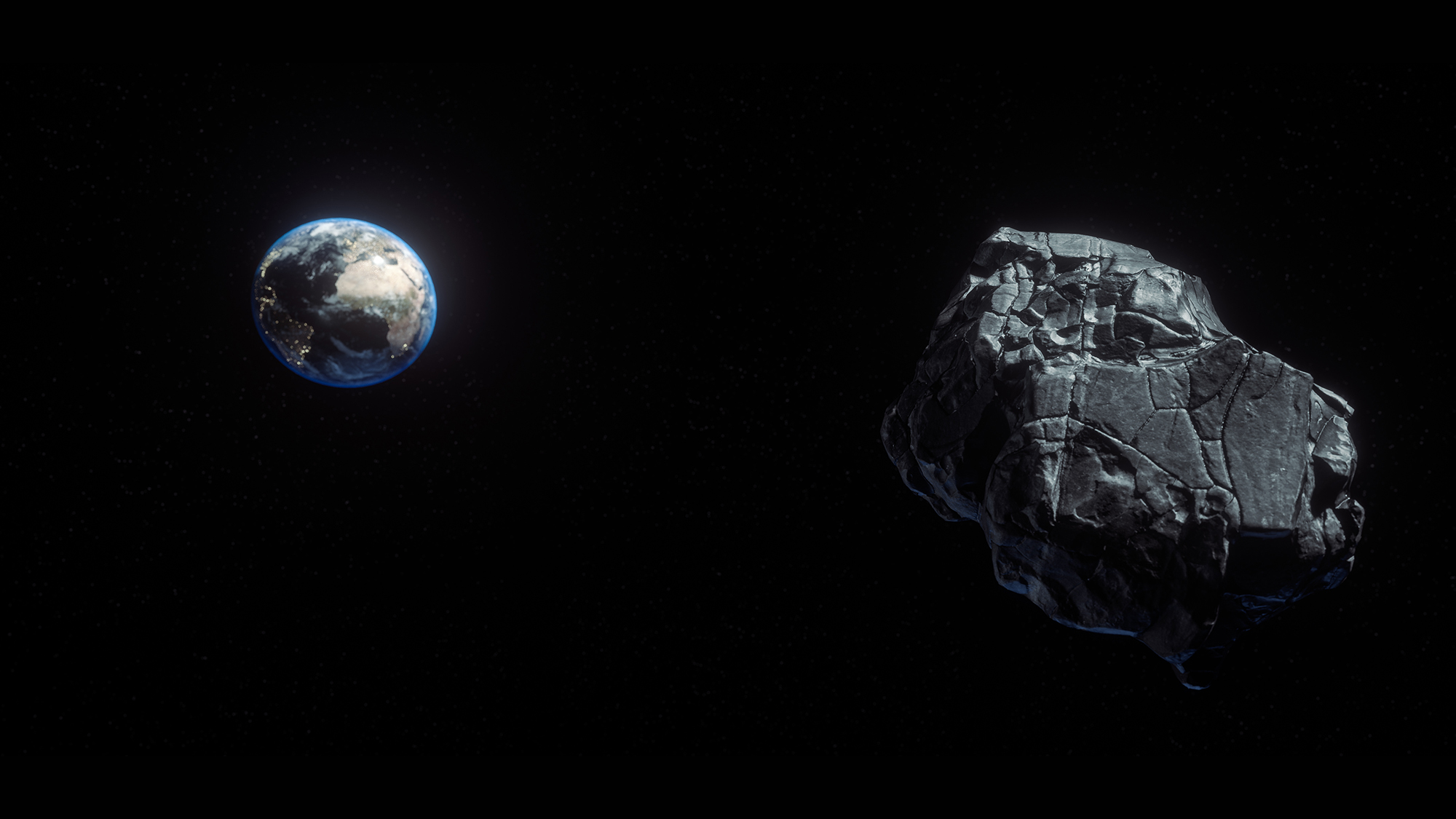Stadium-size asteroid will safely fly by Earth tonight
Don't worry, there's no chance it will hit Earth.
While 2020 continues to be a difficult year, there is a little good news to look forward to tonight (June 5): a near-Earth asteroid will whiz safely by our planet, and astronomers may be able to see the monster rock's flight through telescopes.
The asteroid, known as 2002 NN4, is approaching Earth – but fortunately, not too closely. The space rock will fly by at the equivalent of 13.25 times the distance between Earth and the moon, which is roughly 3.2 million miles (5.2 million kilometers) from our planet. The asteroid's closest approach to us will be at 11:20 p.m. EDT (0320 GMT June 6).
Asteroid 2002 NN4 is more remarkable for its size, with an estimated diameter of between 820 feet and 1,870 feet (250 meters to 570 meters). That's more than a dozen times larger than the object that slammed into the atmosphere above Chelyabinsk, Russia in 2013, which had a diameter of roughly 66 feet (20 meters).
Video: Stadium-size asteroid 2002 NN4 orbit animation
Related: Potentially dangerous asteroids (images)

While the asteroid is big, it is quite dim in all but the largest telescopes. It has a magnitude of just 20, according to NASA's Jet Propulsion Laboratory NEO Earth Close Approaches database. For reference, that's even dimmer than the dwarf planet Pluto. The faintest naked-eye stars are around magnitude 6, and a typical six-inch telescope can see stars of around magnitude 13 or 14.
Astronomy broadcasting service Slooh will hold a members-only star party tonight, as long as the weather holds out for their network of telescopes. The party is expected to start at 10:30 p.m. EDT June 5 (0230 GMT June 6) featuring Mike Shaw, host of the weekly audio show "Nightscapes." (The online observatory is currently offering annual memberships to students for $20, and individual memberships are $100 annually.)
NASA and a network of partner telescopes regularly scan the skies for potentially threatening near-Earth asteroids. Fortunately, the agency has found no imminent threats to our planet — but the search continues, just in case.
Get the Space.com Newsletter
Breaking space news, the latest updates on rocket launches, skywatching events and more!
Studying asteroids and other small objects also helps astronomers learn more about how the solar system formed, since these small worlds were in our neighborhood 4.5 billion years ago when our sun and the planets were only just beginning to coalesce and grow.
- Tiny asteroid's super-close Earth flyby shows planetary protection in action
- About 17,000 big near-Earth asteroids remain undetected
- See the dramatic increase in near-Earth asteroids NASA has discovered
Follow Elizabeth Howell on Twitter @howellspace. Follow us on Twitter @Spacedotcom and on Facebook.
OFFER: Save 45% on 'All About Space' 'How it Works' and 'All About History'!
For a limited time, you can take out a digital subscription to any of our best-selling science magazines for just $2.38 per month, or 45% off the standard price for the first three months.
Join our Space Forums to keep talking space on the latest missions, night sky and more! And if you have a news tip, correction or comment, let us know at: community@space.com.

Elizabeth Howell (she/her), Ph.D., was a staff writer in the spaceflight channel between 2022 and 2024 specializing in Canadian space news. She was contributing writer for Space.com for 10 years from 2012 to 2024. Elizabeth's reporting includes multiple exclusives with the White House, leading world coverage about a lost-and-found space tomato on the International Space Station, witnessing five human spaceflight launches on two continents, flying parabolic, working inside a spacesuit, and participating in a simulated Mars mission. Her latest book, "Why Am I Taller?" (ECW Press, 2022) is co-written with astronaut Dave Williams.
-
FRAS From your article:Reply
"It has a magnitude of just 20, according to NASA's Jet Propulsion Laboratory NEO Earth Close Approaches database. For reference, that's even dimmer than the dwarf planet Pluto. The faintest naked-eye stars are around magnitude 6, and a typical six-inch telescope can see stars of around magnitude 13 or 14. "
There is confusion here between magnitude and absolute magnitude.
It has an absolute magnitude (H) of 20. This object recently reached 14th magnitude, had it had a closer approach it would have become even brighter. In 2130 it will have a closer approach where it will become brighter than 13th magnitude...










